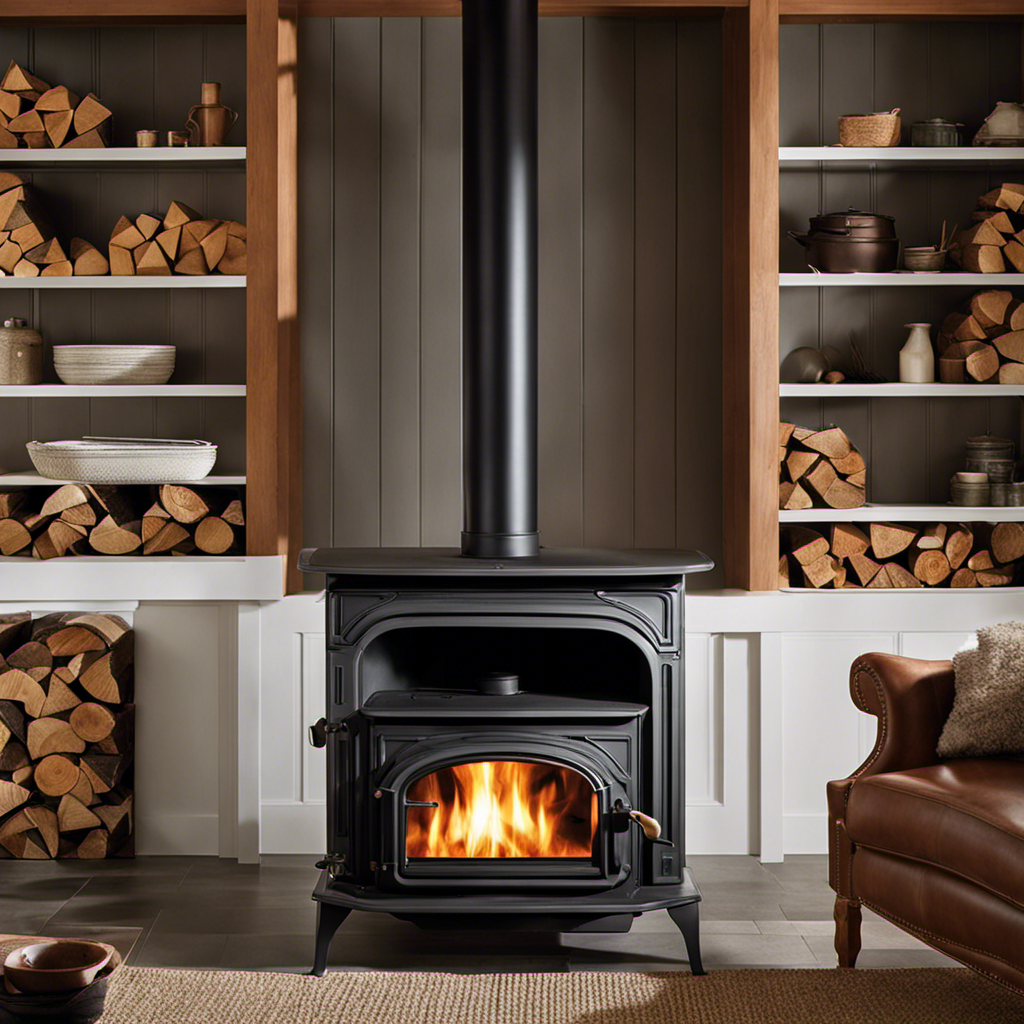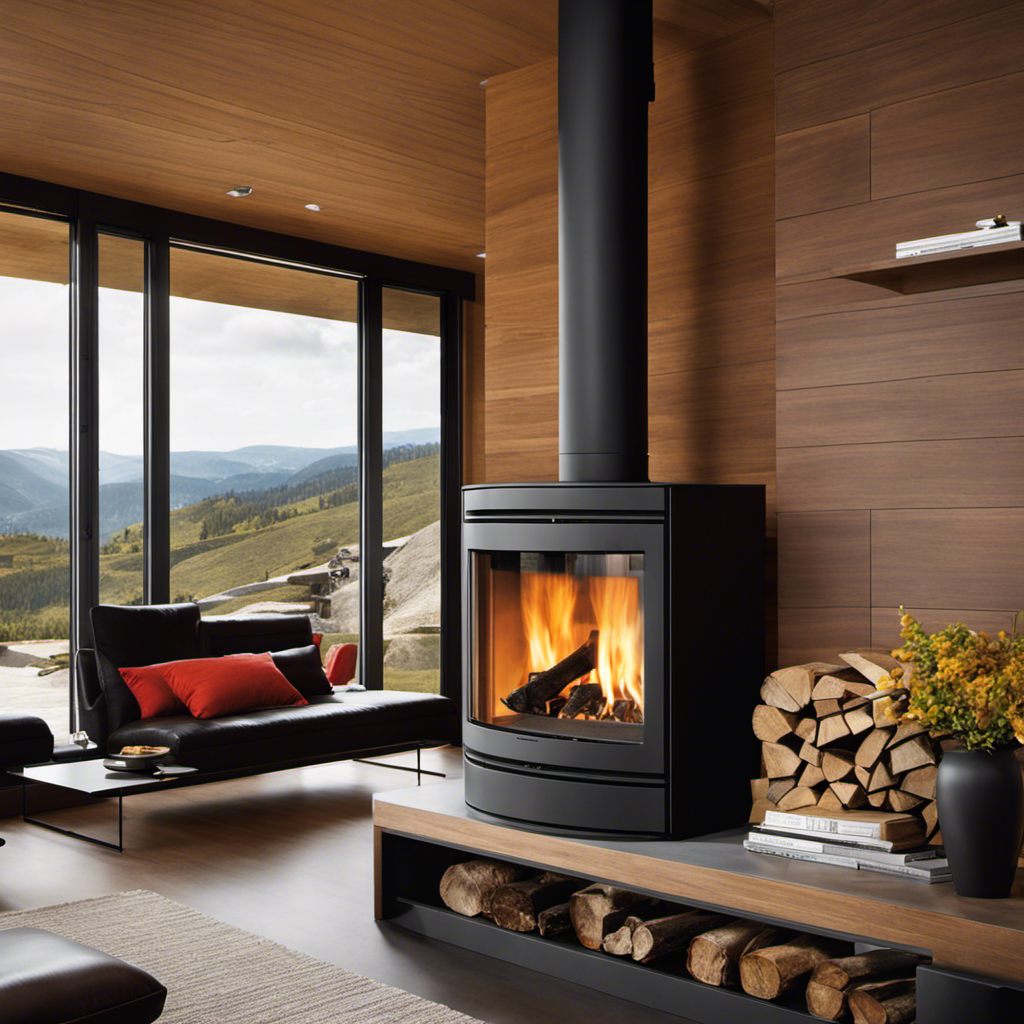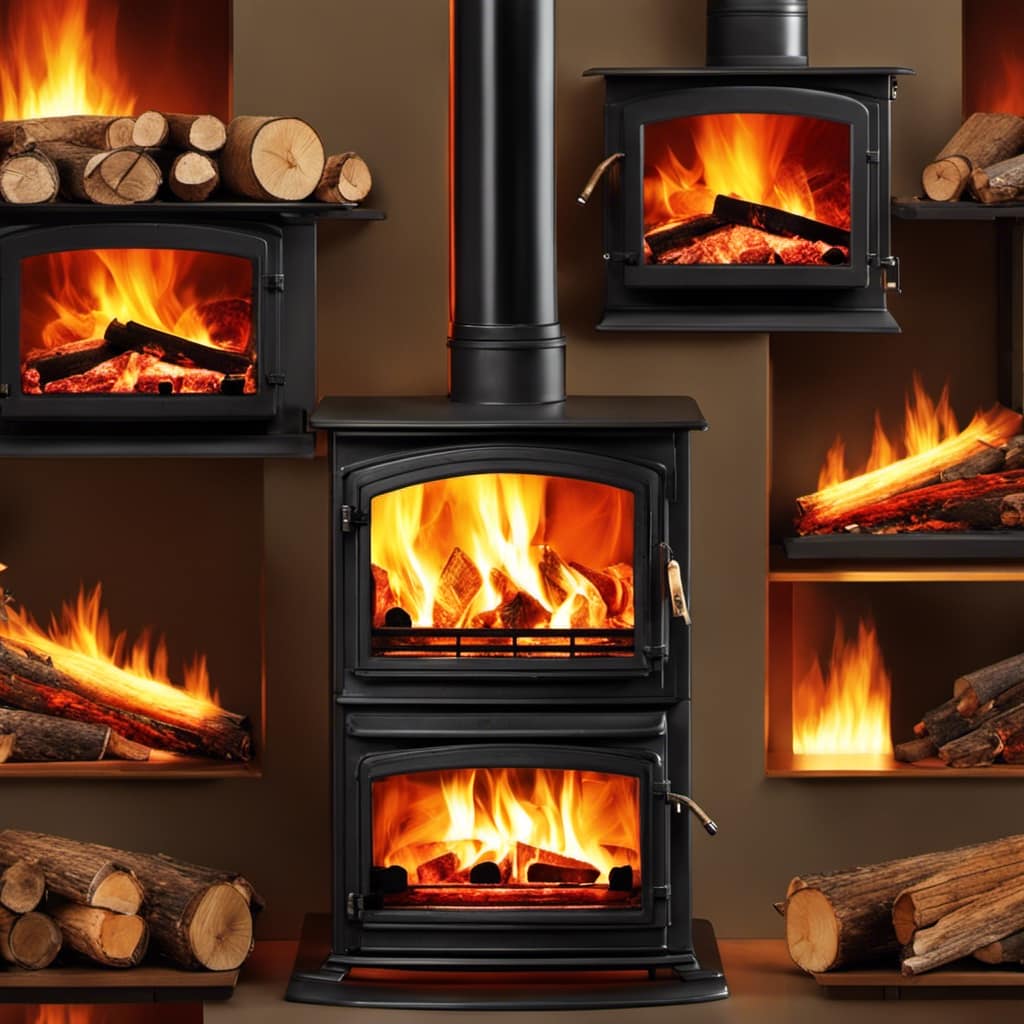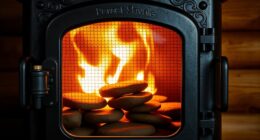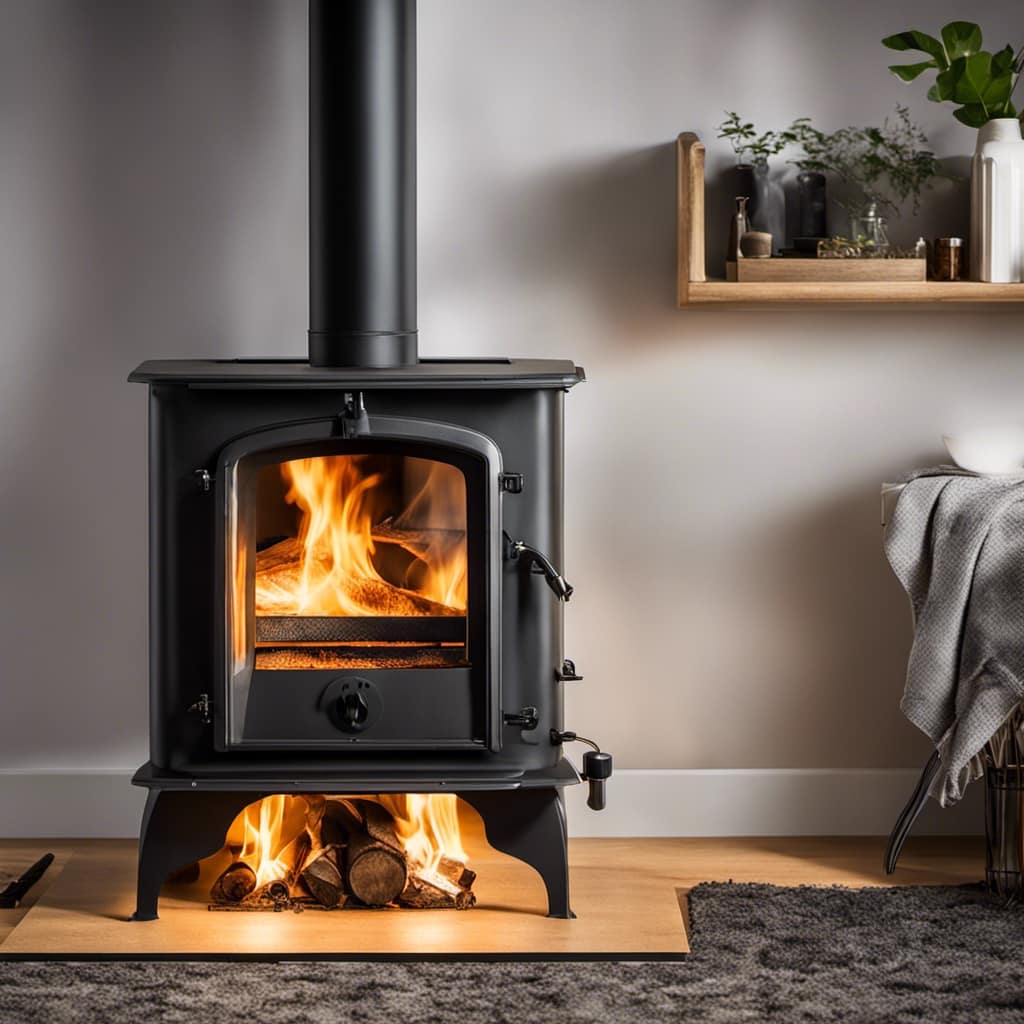
I’ve always appreciated the comforting warmth that my wood stove provides on chilly winter evenings. However, one night, as I bent down to add more wood, I suddenly felt the intense heat emanating from it. It became uncomfortably hot.
In a panic, I quickly assessed the situation and took immediate action to prevent any damage. In this article, I’ll share my experience and offer helpful tips on what to do if your wood stove becomes dangerously hot.
Key Takeaways
- Reduce air supply by closing vents or dampers to regulate temperature
- Keep flammable objects away from the wood stove to prevent accidents
- Regularly maintain and clean the wood stove to ensure proper functioning
- Seek professional help for wood stove issues to effectively diagnose and address problems
Signs of Overheating
I can feel the heat radiating from the wood stove, and the signs of overheating are becoming concerning. When a wood stove gets too hot, it can cause damage to both the stove itself and the surrounding area. It’s essential to prevent this damage by controlling the temperature of the stove.
One of the first signs of overheating is excessive smoke coming from the chimney. This indicates that the wood is burning too quickly and at a high temperature. Another sign is the stove becoming too hot to touch, which can lead to burns if not addressed promptly.
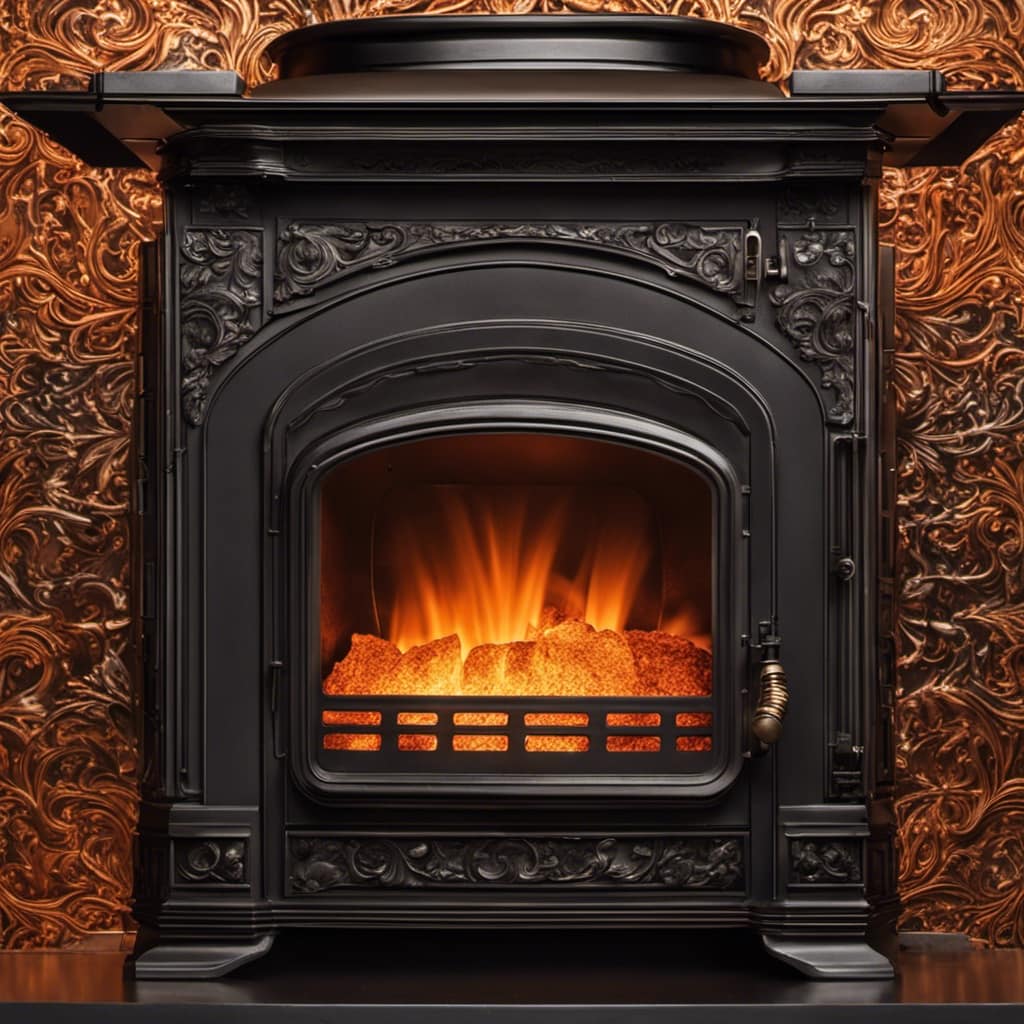
To prevent damage, it’s crucial to adjust the air intake and damper settings to regulate the fire’s intensity. Additionally, using dry, seasoned wood can help maintain a consistent and manageable temperature.
Assessing the Situation
While assessing the situation, it’s important to consider the signs of overheating and take appropriate measures to prevent damage.
Evaluating the risk of a wood stove getting too hot is crucial for managing heat effectively. One key sign of overheating is when the stove becomes extremely hot to the touch. Additionally, if you notice any discoloration or warping of the surrounding materials, it may indicate excessive heat.
To prevent further damage, it’s essential to take immediate actions such as reducing the air supply to the stove, closing dampers, or using heat-resistant barriers to protect nearby walls or furniture. These measures can help regulate the temperature and prevent the stove from reaching dangerous levels.

Immediate Actions to Take
To prevent further damage, I’ll reduce the air supply to the stove and close dampers immediately.
When a wood stove gets too hot, it’s important to take immediate action to ensure safety and prevent any potential emergencies. The first step is to assess the situation and identify the source of the excessive heat.
Once that’s done, it’s crucial to reduce the air supply to the stove by closing the air vents or dampers. This will help regulate the temperature and prevent the stove from overheating.
Additionally, it’s important to ensure that flammable objects are kept at a safe distance from the stove to avoid any accidents.
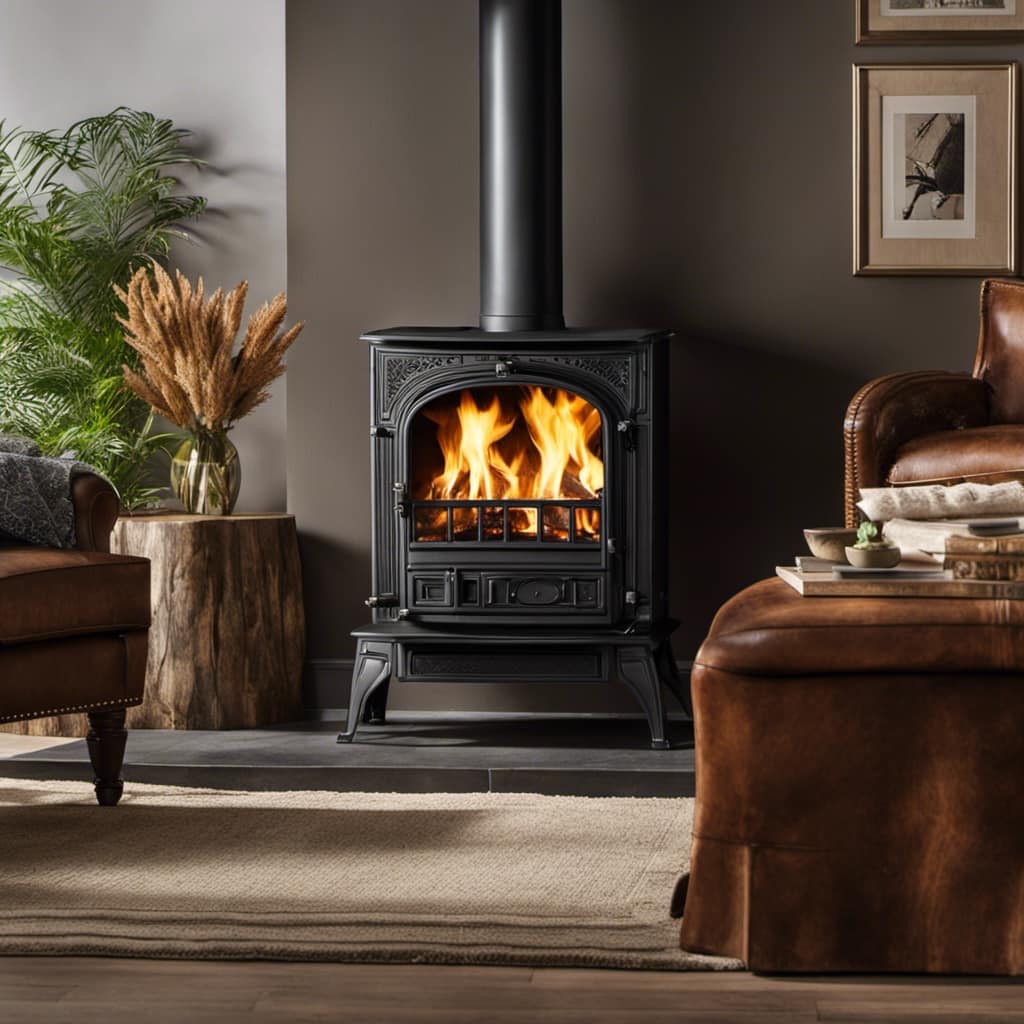
Long-term Solutions and Prevention
Fortunately, long-term solutions and prevention methods can significantly reduce the risk of a wood stove overheating in the future, so it’s important to implement these strategies to ensure a safe and efficient heating system.
Regular wood stove maintenance is essential to keep it functioning properly. One important aspect is cleaning the stove regularly to remove any debris that could impede proper airflow. Additionally, inspecting the stove for any signs of damage or wear and tear is crucial.
Another key aspect of wood stove maintenance is ensuring proper heat regulation. This can be achieved by using heat-resistant materials, such as fire bricks, to line the stove and absorb excess heat. Installing a heat shield or fan can also help distribute heat more evenly throughout the room.
Seeking Professional Help
Honestly, I think it’s crucial to seek professional help when dealing with any concerns or issues related to wood stove maintenance and overheating. While it may be tempting to try DIY troubleshooting, it’s important to remember that a wood stove is a complex appliance that requires expertise to handle properly. Seeking professional help ensures that the problem is diagnosed correctly and addressed effectively.
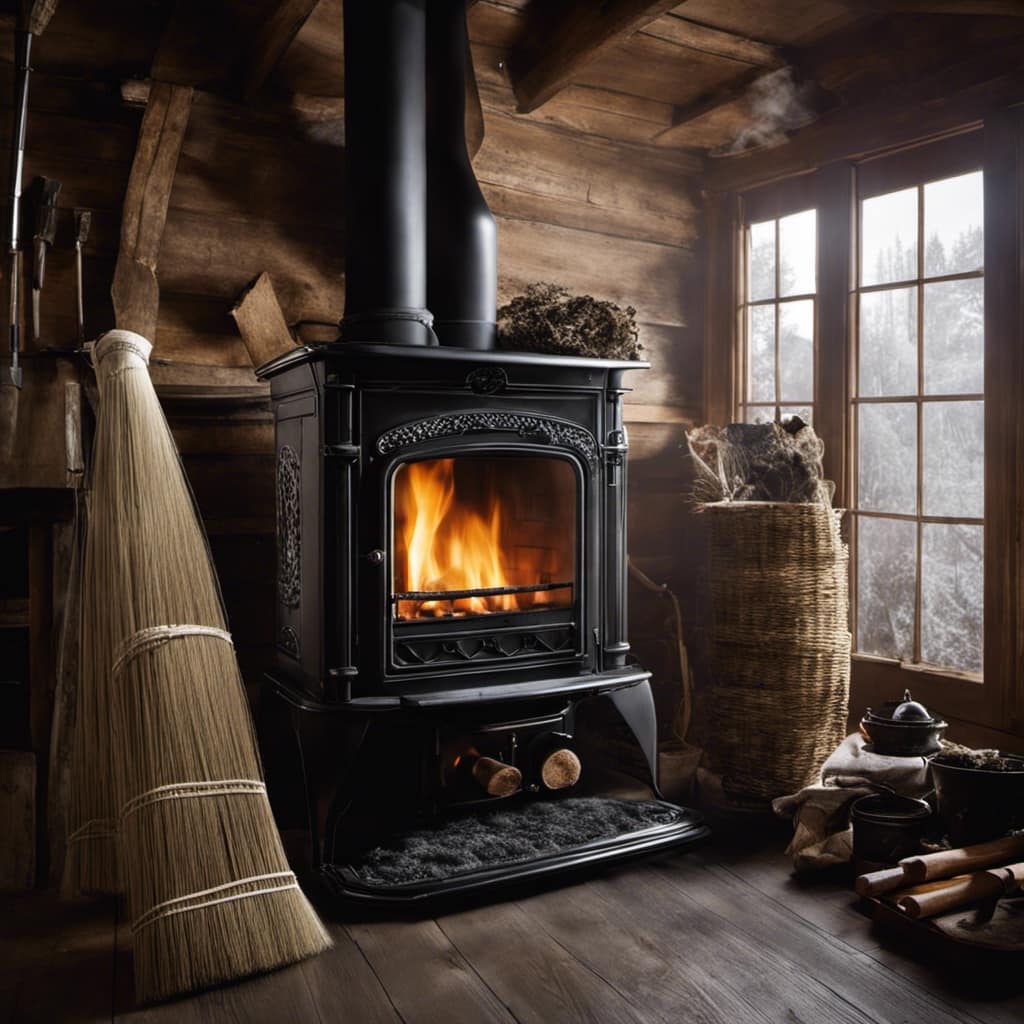
Here are two common causes of wood stove overheating:
-
Insufficient air supply: When the air supply to the stove is restricted, it can cause the stove to overheat. This can happen due to a clogged air intake or a malfunctioning damper. A professional can inspect and clean these components to ensure proper air circulation.
-
Damaged or faulty components: Over time, certain components of the wood stove, such as the gasket or thermostat, can become worn out or malfunction. These issues can lead to overheating. A professional can identify and replace these faulty parts, ensuring the stove operates safely.
Frequently Asked Questions
What Are the Common Causes of Wood Stove Overheating?
Common causes of wood stove overheating include improper air flow, burning too much fuel, or using wet or green wood. To prevent this, make sure to properly adjust the air vents and use dry, seasoned wood.
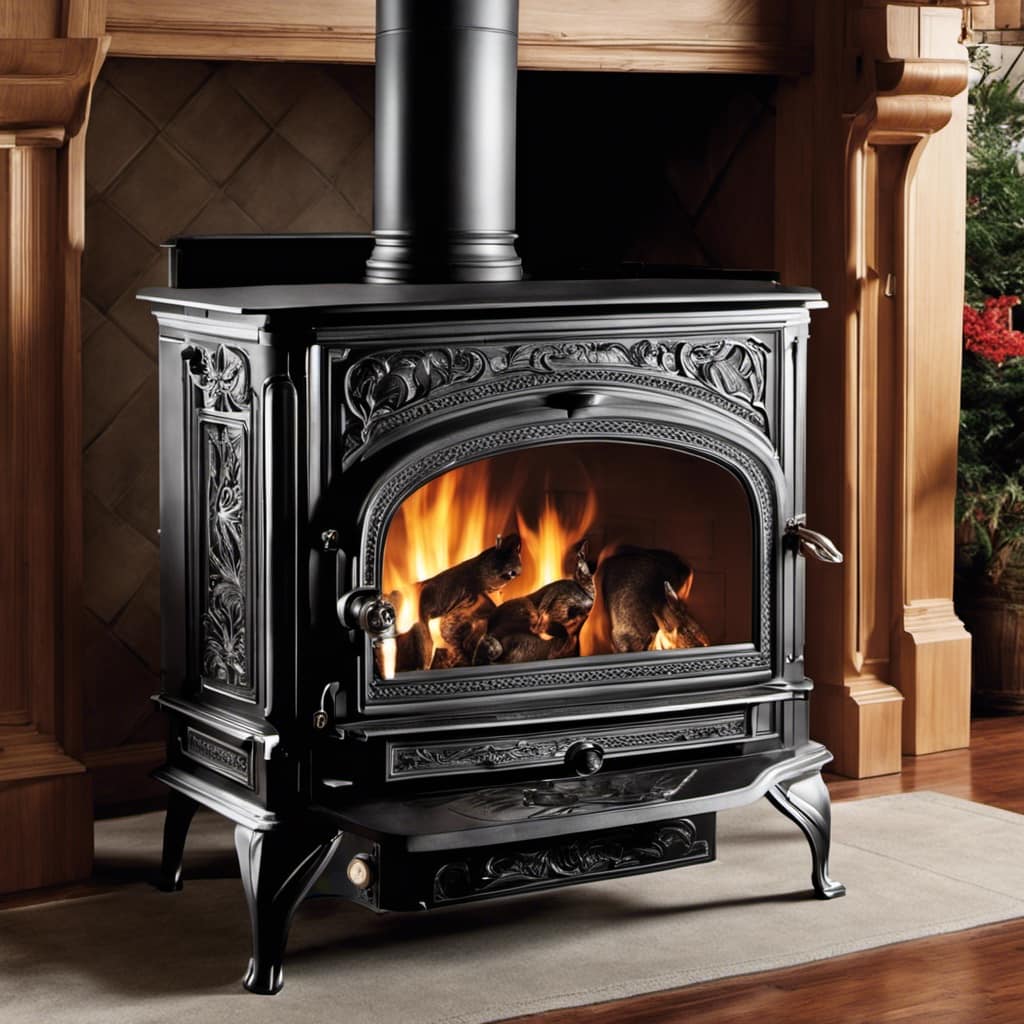
Can a Wood Stove Be Damaged if It Gets Too Hot?
Yes, a wood stove can be damaged if it gets too hot. If not properly maintained, it can overheat and cause damage to the stove itself and potentially start a fire.
How Can I Prevent My Wood Stove From Overheating in the Future?
To prevent my wood stove from overheating in the future, I can manage its temperature by using a thermometer, adjusting the airflow, and adding smaller amounts of wood at a time.
Are There Any Safety Measures I Can Take to Cool Down a Wood Stove if It Gets Too Hot?
If it gets too hot, there are several cooling methods you can try. Look for signs of wood stove overheating, like excessive smoke or a red-hot stovepipe. Take immediate action to prevent a dangerous situation.
Is It Normal for a Wood Stove to Emit a Strong Odor When It Overheats?
Yes, it is normal for a wood stove to emit a strong odor when it overheats. This can be a sign of potential damage or malfunction. Regular wood stove maintenance is crucial to prevent overheating and ensure safe operation.
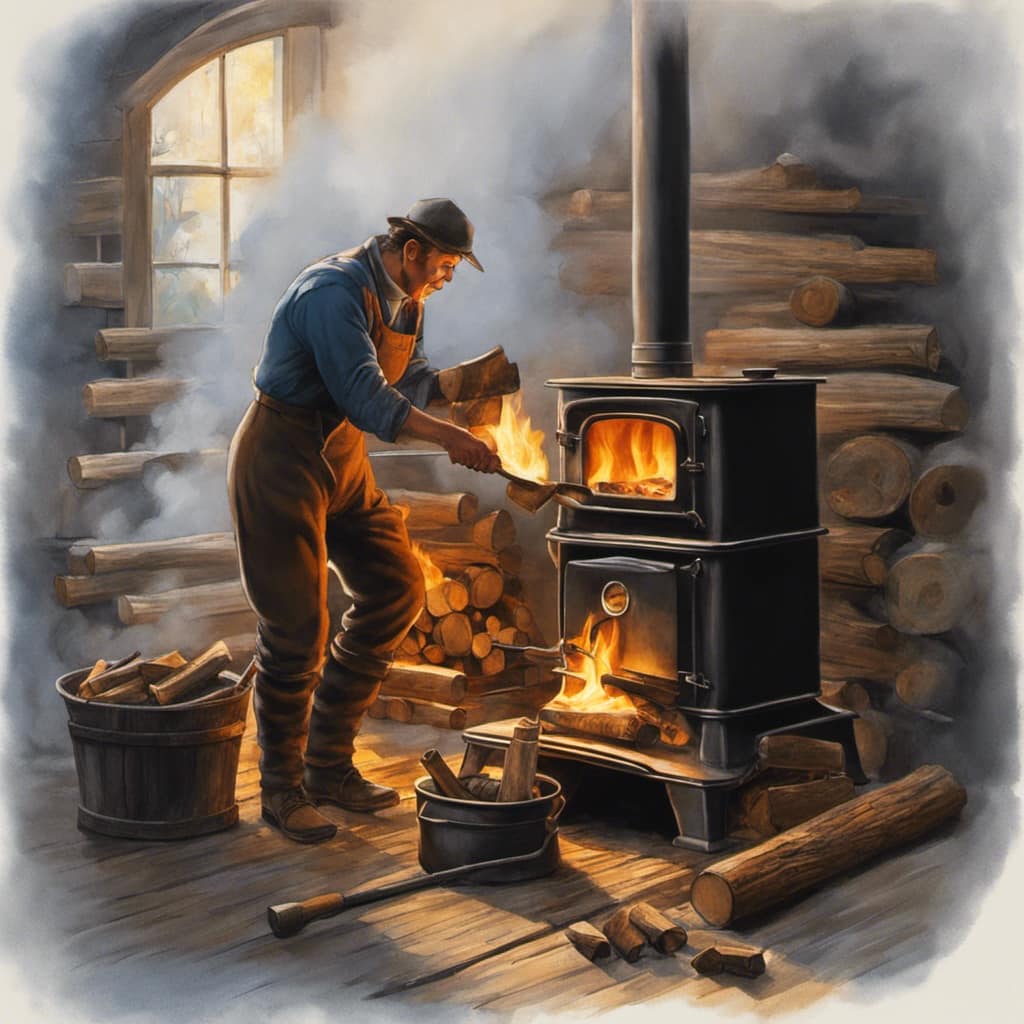
Conclusion
In conclusion, understanding the signs of overheating and taking immediate action is crucial when dealing with a wood stove. By addressing the issue promptly and seeking long-term solutions, we can prevent potential dangers and ensure a safe environment.
Remember, just like a flickering flame, our vigilance and proactive measures can keep the warmth of our homes alive without the risks. Stay informed, stay safe, and let the comforting glow of your wood stove bring joy and coziness to your life.
Growing up surrounded by the vast beauty of nature, Sierra was always drawn to the call of the wild. While others sought the comfort of the familiar, she ventured out, embracing the unpredictable and finding stories in the heartbeat of nature.
At the epicenter of every remarkable venture lies a dynamic team—a fusion of diverse talents, visions, and passions. The essence of Best Small Wood Stoves is crafted and refined by such a trio: Sierra, Logan, and Terra. Their collective expertise has transformed the platform into a leading authority on small wood stoves, radiating warmth and knowledge in equal measure.




